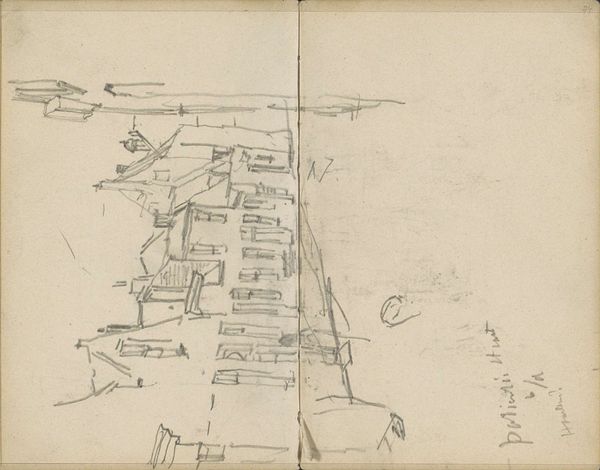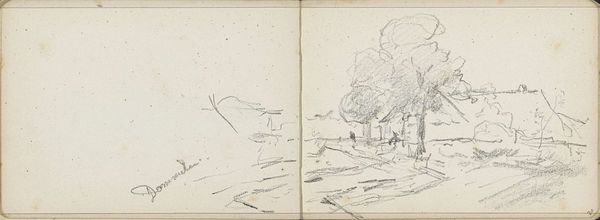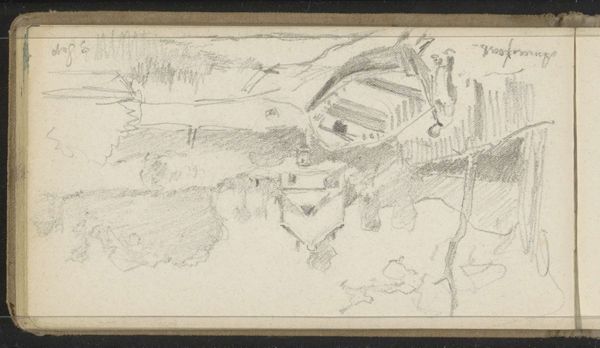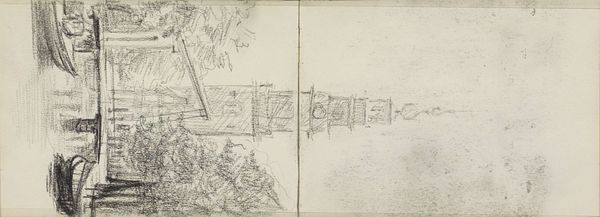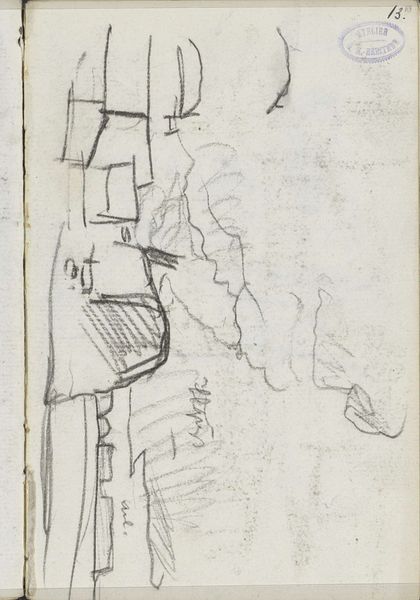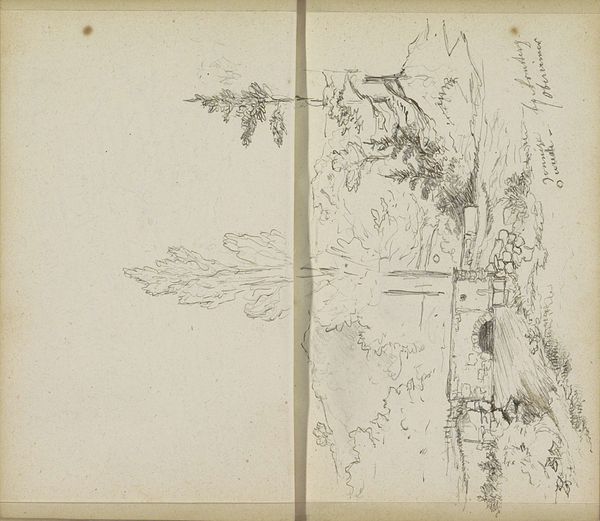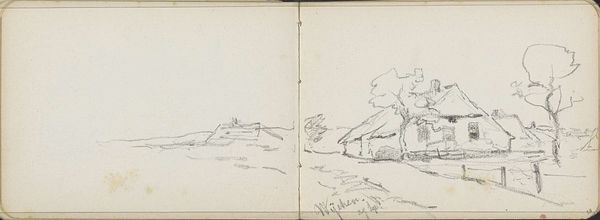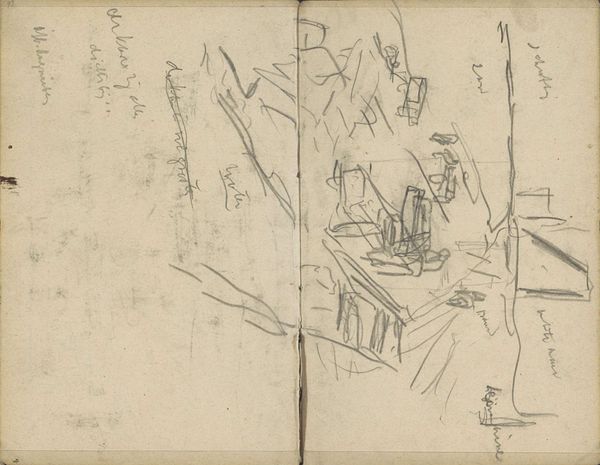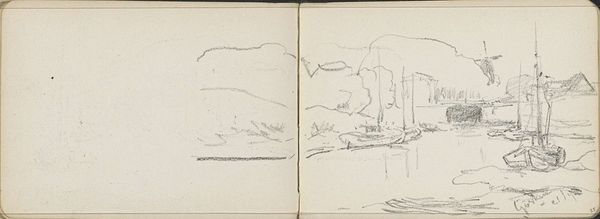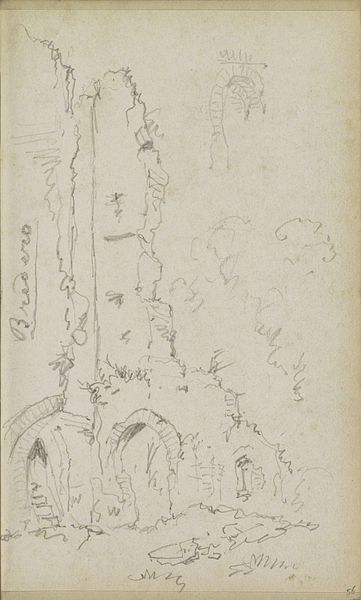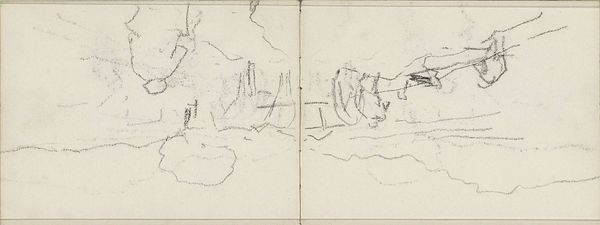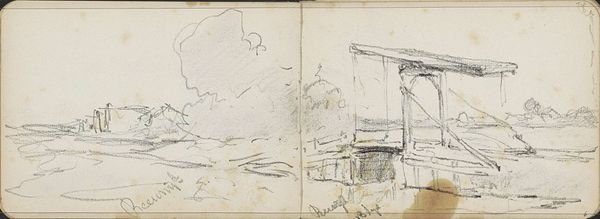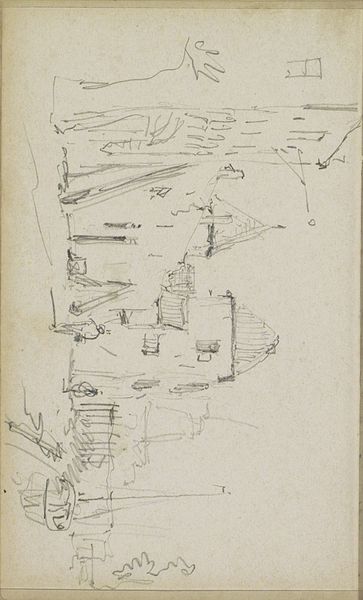
Copyright: Rijks Museum: Open Domain
Curator: Welcome! We’re standing before “Gezicht op de Nieuwe Teertuinen,” or “View of the Nieuwe Teertuinen.” This graphite drawing on paper was created by George Hendrik Breitner sometime between 1907 and 1909, and it currently resides here at the Rijksmuseum. Editor: My initial gut reaction? It's moody, almost melancholic. I’m drawn to how raw and fleeting the lines are – like a visual haiku capturing a very specific moment in time. There's a real sense of impermanence. Curator: Absolutely. Breitner was, of course, a key figure in the Amsterdam Impressionism movement. What might at first seem like a simple landscape is actually a window into the rapid urbanization occurring in Amsterdam at the time. The "Nieuwe Teertuinen" was an area undergoing massive transformation. Editor: So, those skeletal trees kind of framing the scene—they’re not just compositional elements, are they? Curator: Exactly. They become symbols of that urban metamorphosis, their starkness perhaps representing what's being lost. Trees appear as allegorical images since the Middle Ages, representing growth or decay depending on their context. The viewer sees decay depicted here, given the barren and urban surrounding the drawing. Editor: And the rooftops in the background are the invading army of progress. It's all about this dialogue between nature and industry, this clash of eras playing out on a small sketch. There's something deeply philosophical hidden beneath those delicate graphite lines. It makes me wonder what the psychological impact of these changes must have been. Curator: I find it fascinating how Breitner manages to evoke such a strong emotional response using what seems like so little. It speaks to the power of suggestion, the way in which carefully chosen details can trigger a much larger narrative. The location, too, bears heavy symbolic weight – Teertuinen referring to tar gardens or tar fields, implying not only urbanization, but the black soot of industry as well. Editor: Right, the almost ghostly quality! It’s not just the greyscale palette, but the way those buildings seem to emerge from a fog, as if this is a scene fading from collective memory even as it's being created. Well, now I can't unsee any of that! Thanks for turning a simple landscape into a rich narrative. Curator: It is my pleasure! This piece allows us to connect the tangible with the intangible. I hope you continue exploring art with deeper contemplation and enriched understanding.
Comments
No comments
Be the first to comment and join the conversation on the ultimate creative platform.
